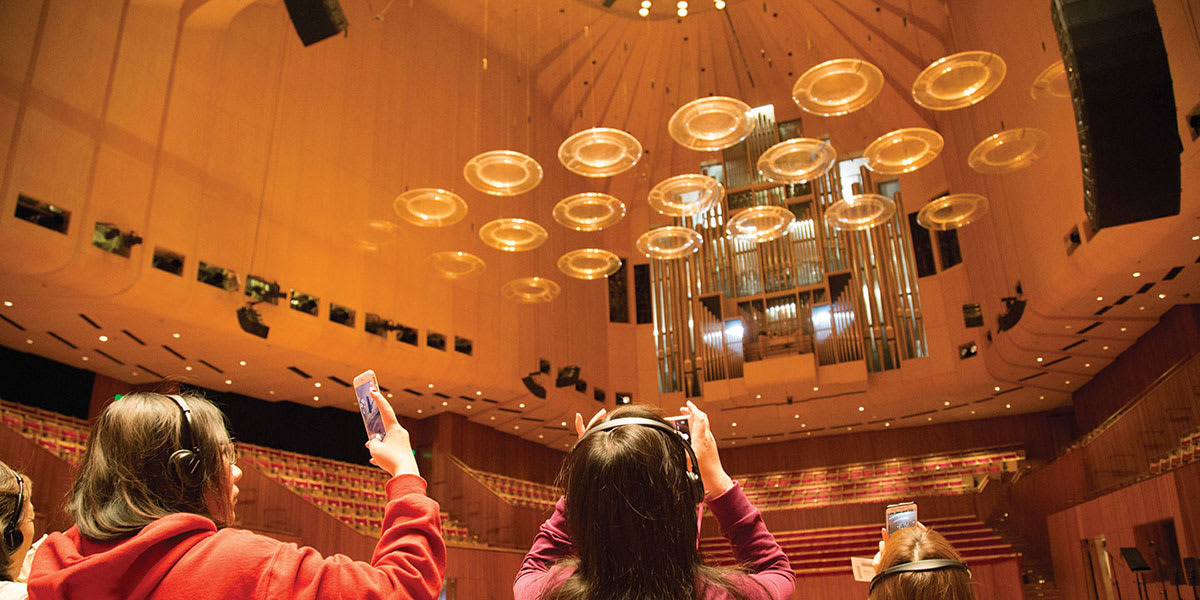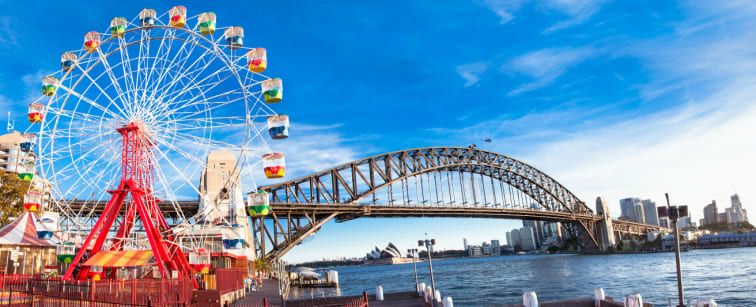Discover the Story of the Sydney Opera House Building & Significance

TABLE OF CONTENTS
1. Introduction
2. History and Design of the Sydney Opera House Building
3. Architectural Marvel
4. Beyond the Sydney Opera House: Cultural Impact
5. Visiting the Sydney Opera House
6. Conclusion
7. FAQs
1. Introduction
Think of Australia, think of Sydney...and the image of the magnificent Sydney Opera House comes to mind. Located on Bennelong Point in Sydney Harbour, this architectural marvel is not only a cultural icon but an extraordinary feat of design and engineering.
When you’re visiting Sydney, a stay at the Oaks Sydney Hyde Park Suites, located across the city’s iconic Hyde Park, gives you incredible access to the very best the city has to offer, including the Sydney Opera House.
2. An Architect’s Vision: History and Design of the Sydney Opera House Building
The story of the Sydney Opera House building goes all the way back to 1956, when the government of New South Wales decided to launch an international design competition to create a venue for performing arts.
The Danish architect, Jørn Utzon, submitted a design that was a cut above the rest and was eventually chosen from more than 200 applicants. His concept was bold and innovative: inspired by natural shapes like seashells, waves and the harbour itself, Utzon had a vision of a series of gleaming white shells, which all appeared to float on the waterfront.
3. An Architectural Marvel: Utzon’s Challenges
Although Utzon's daring design garnered immediate acclaim, when construction began in 1959, it soon became evident that his dazzling roof design, although an incredible feat of imagination, presented significant challenges. Soaring costs and a desperate scramble for innovative building techniques ensued, but Utzon and his devoted team never lost sight of their vision for an iconic Sydney landmark.
The main issue was that Utzon's design for the Sydney Opera House building required cutting-edge technology and architectural techniques that had never been used before. With their unique curves and overlapping forms, his vision for a shell design was clearly going to need incredibly precise calculations to make sure that the building was structurally sound, forcing engineers to come up with brand new ways of creating and assembling his shell segments.
Eventually, Utzon and his team came up with a solution by prefabricating the concrete shells, which were then assembled on site. This process was incredibly labour-intensive and required extraordinary precision from the team, meaning that work progressed at a slower pace than at first planned. However, with stakes this high, it was crucial that things ran smoothly, even if they took longer.
3.1 Political and Financial Struggles
Amidst the architectural and design challenges, other controversies were bubbling beneath the surface of the project. Soaring costs and pressure from politicians caused the relationship between Utzon and the government to sour, and in 1966, he resigned mid-project.
With a new team forced to step in, the Sydney Opera House was completed under the leadership of Australian architects, including renowned architect Peter Hall, who worked with the government to ensure that Utzon’s incredible vision for the Opera House went ahead, albeit with some compromises.
3.2 Completion and Inauguration
Queen Elizabeth II officially opened The Sydney Opera House on October 20th, 1973. Despite the many challenges during its construction, the building was immediately hailed as a breathtaking triumph of modern architecture.
The unveiling turned out to be the perfect showcase for the Sydney Opera House building, with a whole host of musical and artistic performances giving the acoustics and incredible beauty of the building a chance to shine.
4. Beyond the Sydney Opera House Building: Cultural Impact
The Sydney Opera House has been a hub for culture right from the get-go: contemporary dance, opera, ballet, theatre, music old and new... the list is endless.
The venue is home to several major performing arts companies such as Opera Australia, the Sydney Theatre Company, and the Sydney Symphony Orchestra. A must-visit cultural destination, artists and audiences flock to its multipurpose venues, including the Concert Hall and Joan Sutherland Theatre.
However, the cultural impact of the Sydney Opera House goes way beyond the world of performance. The venue has also become a centre for community events, workshops and educational programmes.
The Opera House may be in Sydney, but as a symbol of artistic expression and cultural exchange, its reach is worldwide. In 2007, the Sydney Opera House was given a place on the UNESCO World Heritage List, ensuring that it will be treasured and protected for generations to come.
5. Visiting the Sydney Opera House
Getting to the Sydney Opera House at Bennelong Point is easy: take a train or bus to Circular Quay Station, or hop in the car and park in one of the limited spaces at the Wilson Parking Sydney Opera House.
When you’re there, you can take a guided tour around the building or even go backstage. Check out the shows and performances in advance to avoid missing out! There are plenty of dining options, with amazing harbour views from the Opera Bar, Bennelong Restaurant, or House Canteen.
Mornings are best if you want to beat the crowds, while evenings bring glorious sunsets, gorgeous lighting and a buzzing atmosphere.
Taking a tour will set visitors back between $25–$50 AUD per person, while performances vary.
6. Conclusion
The Sydney Opera House building is a contemporary architectural marvel that embodies Australia’s innovation, creativity and perseverance.
It shows the country’s commitment to art, culture and music, and how this brings communities, countries and people together. Utzon passed away in 2008, but his legacy lives on, inspiring future generations and captivating visitors.
Whether it’s a romantic getaway or a holiday of a lifetime with the whole family, if you stay at an Oaks Hotel when you’re in Sydney, you’re guaranteed an incredible experience in an unbeatable location.
7. Sydney Opera House FAQs
What is the history behind the Sydney Opera House?
The Sydney Opera House was intended to showcase performing arts in Sydney, with the NSW government launching a competition for the best architectural design.
Why did the Opera House take 14 years to build?
The architect, Utzon, came up with an incredible vision which took years to realise, involving feats of architecture and engineering, an enormous budget, and plenty of behind-the-scenes dramas.
What was the Sydney Opera House the youngest building to achieve?
Incredibly, at only 34 years old in 2007, the building was given UNESCO World Heritage status.
What are 5 interesting facts about the Sydney Opera House?
- The building hosts over 1,500 performances each year
- It took over 10,000 workers to build the Sydney Opera House
- Its architect, Utzon, never went back to Australia to see the completed building in person
- More than 8 million visitors flock to the Opera House every year
- Paul Robeson, the legendary American singer, gave the first performance there in 1960 – to workers on the site!
How many performance spaces are inside the Sydney Opera House?
The building boasts 7 main performance spaces: The Concert Hall is the largest, with space for over 2,600 people. The Joan Sutherland Theatre, named after the famous Australian soprano, is used for opera, ballet, and musicals, while the Drama Theatre and Playhouse are smaller and mainly used for theatre and comedy performances and plays.
The multi-purpose Studio seats up to 300 and is a great venue for contemporary music, experimental theatre, cabaret and dance. The smaller, more intimate Utzon Room, named for its celebrated architect, has stunning views of the harbour and is used for private events and talks. Outside, the Forecourt, on the steps of the Opera House, is used for outdoor gigs and special events.







